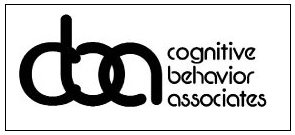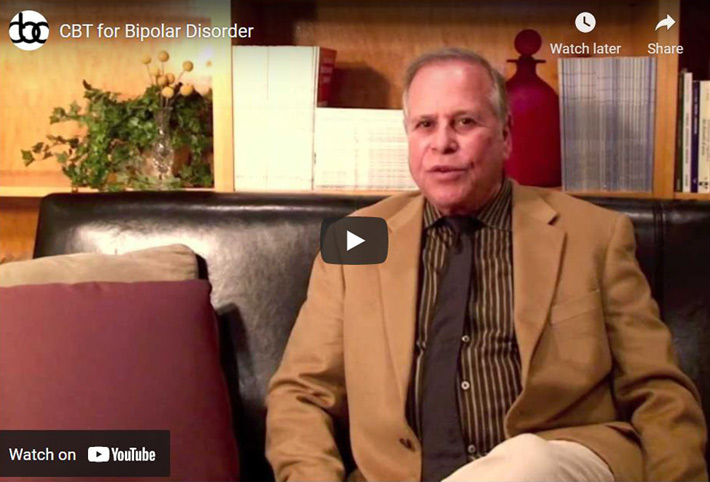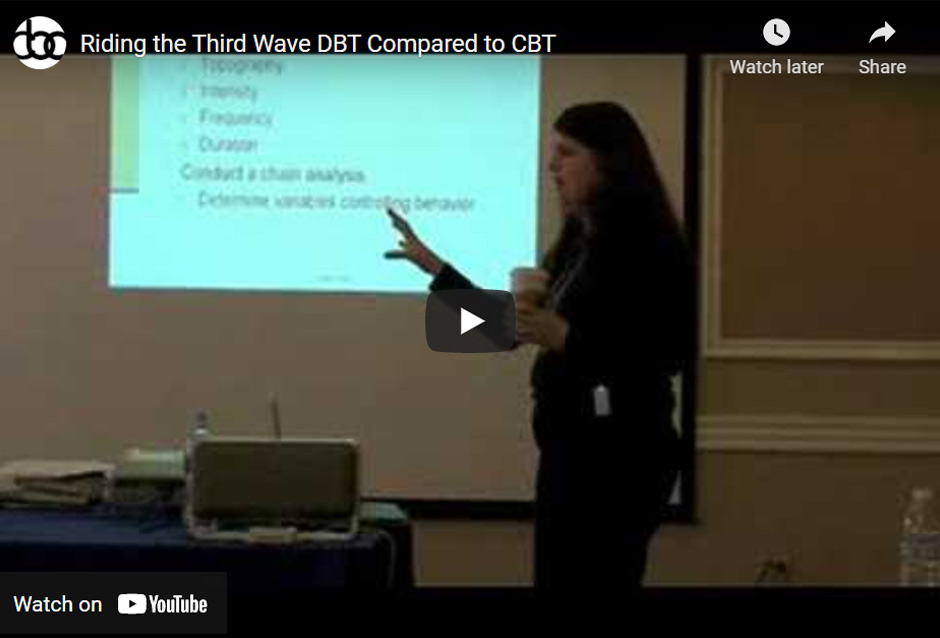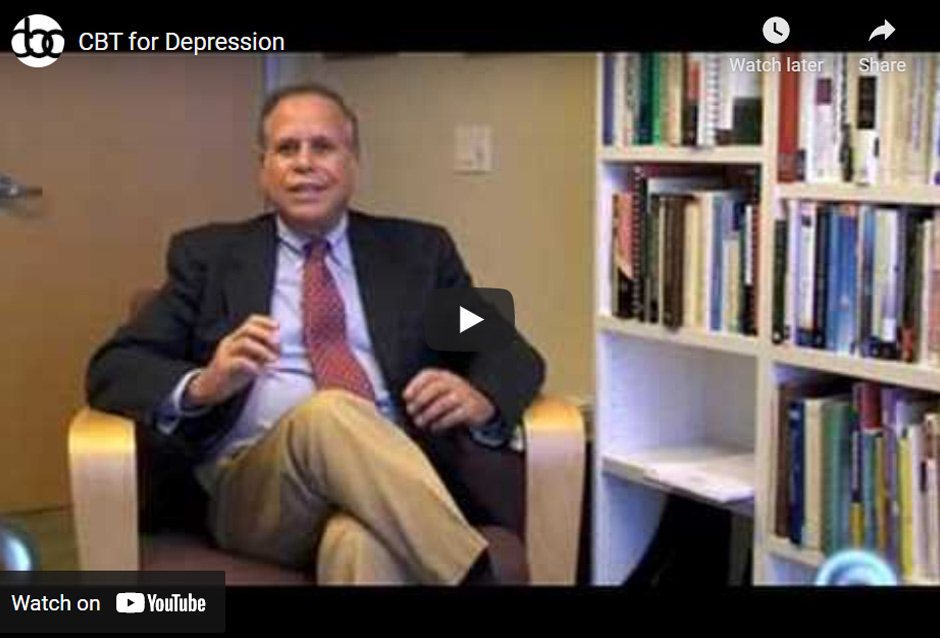List of Treatments by Disorder
Attention-Deficit/ Hyperactivity Disorder (ADHD)
ADHD in adults is a prevalent and often disabling disorder. The majority of clients treated with medications will have symptoms that require additional strategies. The CBT program for adult ADHD is empirically supported and makes use of practical step by step instructions. The clinician teaches the clients skills that have been proven to help adults function. These skills include; organization of multiple tasks, problem solving and organizing of papers and materials. In addition, suggestions are made about reorganizing the environment to aid with attention span and distractibility. In today’s environment many compensatory mechanism make use of new and innovative digital resources.
CBA’s "ADHD: Focusing on the Target" program is designed around on-going research that Cognitive Behavior Therapy can help patients with ADHD. "ADHD: Focusing on the Target" has been found to be successful in clinical trails, with greater patient's symptoms diminishing after treatment when compared to those patients who were administered drugs alone. CBT aims to provide the client with skills necessary in overcoming many problems associated with ADHD. Treatment is conducted in structured sessions and improvement is monitored for continued progress.
Click here to learn more on the National Institute for Mental Health's website.
Click here to download the Focusing on the Target brochure.
Bipolar Disorder
Bipolar disorder patients have extreme mood swings including highs (mania) and lows (depression). Some symptoms may include excessive energy, irritability, racing thoughts,sleep disturbances, poor judgment and drug or alcohol abuse. This disorder may run in families and is often first diagnosed in young adulthood. Bipolar disorder involves a chemical imbalance caused by a complex set of genetic and environmental factors.
CBT has been shown to be particularly helpful in combination with medication treatment for this disorder. Helping the patient to adjust their sleep/wake cycle, identify and deal with difficult personal conflicts,comply with medication treatments and regulate their emotions cognitively and behavioral are key elements of the treatment.
Joel Becker, Ph.D. discusses the conceptualizations of bipolar disorder and talks briefly about a few studies regarding bipolar disorder.
Click here for more info on the National Institute of Mental Health's website.
Body Dysmorphic Disorder
Body Dysmorphic Disorder (BDD) is characterized by having a disturbed body image. It is generally diagnosed in those who are extremely critical of their physique or self image, despite the fact there may be no noticeable disfigurement or defect.
Treatment for body dysmorphic disorder may involve a combined approach involving medication and talk therapy (psychotherapy). Antidepressant medications used along with cognitive behavior therapy can help people with body dysmorphic disorder manage the obsession and anxiety about their appearance, increase confidence in how they look, and obtain normalcy in their social and work lives.Exposure based procedures are used to increase client’s ability to tolerate distress.
Click here for more info on the Mayo Clinic's website.
Borderline Personality Disorder
Patients who are diagnosed with this disorder have difficulties in a number of areas of their lives. The symptoms of BPD can occur in a variety of combinations, and individuals with the disorder have many, if not all of the following traits: fears of abandonment, extreme mood swings, difficulty in relationships, unstable self image, difficulty managing emotions,impulsive behavior, self-injuring acts, suicidal ideation and transient psychotic episodes.
Our treatment for BPD follows the model of Marsha Linehan, Ph. D., known as Dialectical Behavior Therapy (DBT).This program has been tested empirically and has shown particularly good results in helping client’s who are experiencing the above symptoms. The basic components of DBT are offered in group and individual form at CBA. The four primary modules used in the treatment are Mindfulness Training, Emotion Regulation Training, Distress Tolerance, and Interpersonal Effectiveness Training.
Dr. McFarr, a board and faculty member of the CBTI, discusses DBT for Borderline Personality Disorder.
Click here for more info on the National Institute of Mental Health's website.
Chronic Pain
Chronic pain is typically thought of as pain that lasts beyond three months. It can be broadly categorized into the following types:
Pain that lingers long after an injury has healed. Some examples include continued pain from an old sports injury and pain that remains for a long time after a major surgery or medical procedure.
Pain that persists in the absence of a specific injury. Some examples are having pain from a "bad back," migraine headaches, overuse of a particular body part (e.g., "runner's knee"), fibromyalgia, and temporomandibular joint disorder (TMJ).
The experience of pain can be conceptualized from a behavioral medicine perspective which integrates biological, psycho-social, and behavioral components of pain. Many years ago, researchers demonstrated that the amount of pain experienced by a patient can be affected by emotional, cognitive, and behavioral responses to the pain. The opposite also occurs: that is, emotions, thoughts, and behaviors can be negatively impacted by the experience of pain.
Complicating factors involved in the experience and treatment of chronic pain can include:
Developing persistent symptoms of depression, anxiety, or other psychological distress as a result of pain. This is very common, but also very treatable. Treatment in these cases will address both the psychological and physical aspects of pain.
Having a psychological problem or disorder that developed prior to the onset of the chronic pain (e.g., depression, anxiety), which may negatively impact the experience and management of pain. In these cases, treatment focuses on both the preexisting psychological disorder as well as the chronic pain, and the way in which they interact.
Patients may be referred to CBA following a complete medical evaluation of their pain and when their referring physician believes the patient would benefit from learning how to address any psycho-social and behavioral factors relating to or resulting from their problem. Other patients may self refer to CBA.
CBA’s "Back to Life: Managing Your Pain" program is a Cognitive Behavioral Therapy program (CBT) designed specifically for patients with chronic pain. In numerous clinical studies, CBT has been shown to be highly effective in managing pain and improving the client’s ability to function. We use a combination of cognitive, acceptance, behavioral and mindfulness based strategies to help each patient. When appropriate, biofeedback training may also be incorporated into the treatment plan. Your clinician will work with you to create a plan tailored to your specific needs.
In 10-12 weekly sessions, clients will learn specific methods for controlling pain, how to stop the downward spiral of increasing emotional distress and impaired daily functioning and how to change the negative thoughts, interpretations, beliefs and attitudes which contribute to their pain.
Click here for more info on the Health Psychology website.
Click here to download the Back to Life Brochure.
Couples/Marital Problems
The treatment of couples problems are an area of specialty at CBA. Frequently there is a pattern of interaction between partners that involves negative communication,criticism, distorted communication (e.g. unrealistic expectations) or non-communication (e.g. withdrawal). These interpersonal problems have resulted in impairment of individual or family functioning by the development of symptoms.
Cognitive-behavioral strategies have been developed over the years to help couples reduce conflict. CBT seeks to help couples change where possible, but frequently works on helping couples to accept the differences between them. Communication training, negotiation training and acceptance management strategies have all been shown to be effective in increasing couples satisfaction and in the reduction of associated symptoms.
Click here for more info on the American Association for Marriage and Family Therapy's website.
Depression
In any given year, depression affects about 18.8 million people. Two common types of depression include Major Depressive Disorder, which is an acute period of depression lasting at least two weeks, and Dysthymic Disorder, which is a chronic low mood lasting at least two years. Symptoms of depression can include feeling sad, down, depressed, or tearful; loss of interest or pleasure in activities; changes in weight; sleep problems;fatigue/loss of energy; guilt or feelings of worthlessness; problems in thinking or concentrating, difficulty making decisions; and/or thoughts of suicide.
Treatments for depression can include psychotherapy and/or medication. Cognitive therapy was first developed to treat depression and challenge negative thoughts about oneself, the world,and the future and has been shown to be helpful in reducing symptoms of depression. Cognitive-behavioral treatments for depression also include a “behavioral activation” component that focuses on helping the person become active and engaged in life. Behavioral activation can include exercise, scheduling pleasurable events, and meditation. Similarly,mindfulness- and acceptance-based treatments have been shown to be efficacious in reducing depression and preventing relapse. While many individuals take medications (such as antidepressants) during their course of therapy, cognitive-behavioral treatments alone are effective for even moderate to severe depression.
Click here for more info on the National Institute of Mental Health's website.
Generalized Anxiety Disorder
Generalized Anxiety Disorder (GAD) is characterized by chronic, excessive worry that persists for months on end. Individuals with GAD often fear the worst, worry even when things are going well and experience physical symptoms like muscle tension, disrupted sleep and fatigue. Though individuals may recognize that their anxiety is not proportionate to the situation at hand, they often feel that they cannot control the worry or may even believe that worrying is useful in preventing feared outcomes.
Click here for more info on the National Institute of Mental Health's website.
Illness Anxiety Disorder
People with illness anxiety disorder (i.e.,overwhelming health anxiety) are strongly convinced that even innocuous physical symptoms are an indication that they have a serious disease or illness. They aren't reassured by doctors or medical tests showing that they're in good health. Instead, they may turn to doctor after doctor and demand test after test in search of a diagnosis.
In recent years, cognitive behavior therapy has been shown to help people with illness anxiety disorder. Therapists teach patients to focus less on their symptoms and talk about how stress, anxiety and depression can increase symptoms. They explain that the actions they usually take to relieve anxiety usually make things worse (e.g., feeling for lumps, reading about illness). They also teach distraction and relaxation techniques.
Click here for more info on the Cleveland Clinic's website.
Insomnia
Nearly everyone has occasional sleepless nights, perhaps due to stress, heartburn, or drinking too much caffeine or alcohol. Chronic insomnia is defined as having problems falling asleep, maintaining sleep, or experience nonrestorative sleep that occurs on a regular or frequent basis, often for no apparent reason.Insomnia can affect not only your energy level and mood, but also your health as well. Sleep helps bolster your immune system. Fatigue, at any age, leads to diminished mental alertness and concentration. As many as one in 10 Americans have chronic insomnia, and at least one in four has difficulty sleeping sometimes. But that doesn't mean you have to just put up with sleepless nights. Some simple changes in your daily routine and habits may result in better sleep.
CBA’s “Soundly Sleeping” program is offered in individual or group format. The basic components of the program include psycho education about sleep, lifestyle issues as they relate to sleep,sleep scheduling and restriction and cognitive (thought) work to improve sleep. This program is based on a similar program developed at the Massachusetts General Hospital that had been shown to improve almost all the participants sleep and resulted in decreased use or discontinuance of sleep medications.
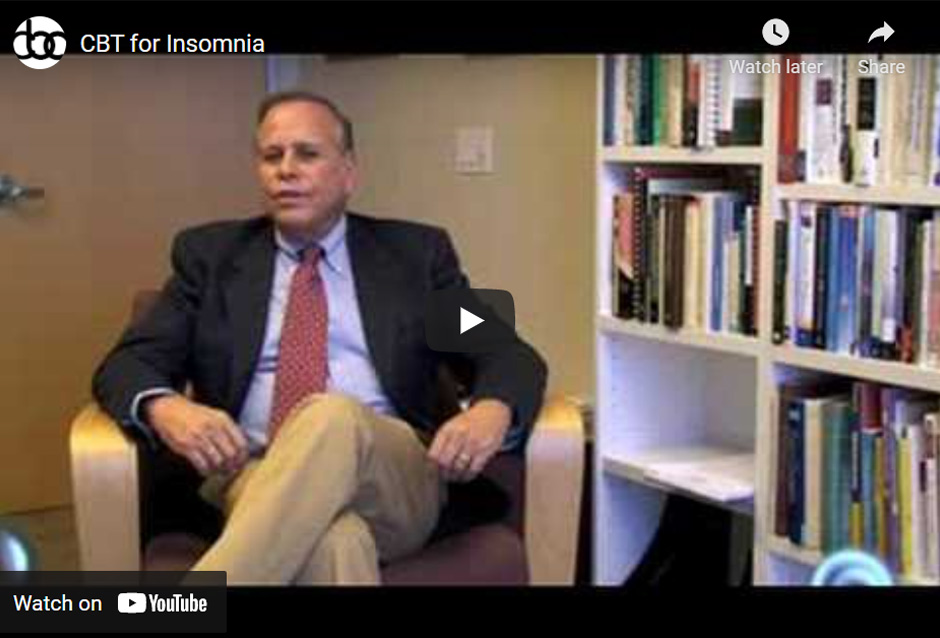
Click here to read about CBT vs. sleeping pills.
Click here for more info on the Mayo Clinic's website.
Click here to download the Soundly Sleeping brochure.
Irritable Bowel Syndrome (IBS)
Irritable bowel syndrome (IBS) is a “syndrome,” meaning a group of symptoms. The most common symptoms of IBS are abdominal pain or discomfort often reported as cramping, bloating, gas, diarrhea, and/or constipation.
Up to very recently, treatment for IBS consisted primarily of changes in diet (e.g., eating foods with more fiber) and/or taking various medications (e.g., antidiarrheals, antispasmodics, antidepressants, etc.). However, cognitive behavioral therapy has been shown to be effective in looking at how an individual’s increased sensation awareness, combined with negative thoughts and avoidance behaviors related to gut sensations, as well as life stressors, maintain and intensify the constellation of physical symptoms associated with IBS.
CBA’s treatment program is designed around on-going research that Cognitive Behavior Therapy can help patients with IBS. Within 10-16 weekly sessions, clients typically notice they are less focused on their gut sensations (e.g., abdominal pain, urgency, fullness, bloating, etc.) and that variations in bowel movement form or habits are not necessarily a cause for alarm. Eventually, our clients have been able to consume previously “forbidden” foods (e.g., spicy, hot, greasy foods, or items containing dairy or caffeine), travel distances far from “safe” bathrooms, confront destinations that are “unpredictable,” and engage in activities once feared to exacerbate IBS symptoms (e.g., exercise, physical intimacy).
Click here for more info on the Mayo Clinic's website.
Obsessive-Compulsive Disorder (OCD)
Obsessive-compulsive disorder (OCD) is most commonly characterized by obsessive, distressing, intrusive thoughts and related compulsions (i.e., tasks or "rituals") which attempt to neutralize the obsessions and the anxiety they produce.
Cognitive behavior therapy has been shown to be the most effective form of therapy for OCD. Cognitive behavior therapy involves retraining your thought patterns and routines so that compulsive behaviors are no longer necessary. One approach in particular is called exposure and response prevention. This therapy involves exposing you to a feared object or obsession, such as dirt, and teaching you healthy ways to deal with it and to be able to tolerate the anxiety.
Click here for more info on the National Institute of Mental Health's website.
Panic Disorder
Panic disorder is characterized by unexpected and intense attacks of fear accompanied by physical symptoms such as pounding heart, sweating, dizziness or faintness. Attacks may also include chills or hot flushes, numbing or tingling sensations, nausea or feelings of unreality. Panic attacks usually peak within ten minutes, but may last longer. Initially, some may believe they are having a heart attack or losing their mind. Given the unexpected nature of the attacks, fear or worry about future attacks can develop. This fear may result in avoidance of places or situations where panic attacks have occurred.
CBT is generally considered the most effective treatment for panic disorder. The main goal of CBT is to change cognitive and behavioral patterns in order to better cope with fear and anxiety. Primary components of the treatment include psycho education to correct myths about panic attacks (e.g. “I’m going crazy”), self-monitoring of symptoms to identify triggers,cognitive restructuring of thoughts about bodily sensations ( i.e.,identifying and correcting maladaptive thoughts regarding panic symptoms) and exposure therapy targeting feared sensations and feared situations. In therapy, clients will learn that symptoms of panic are neither harmful nor dangerous
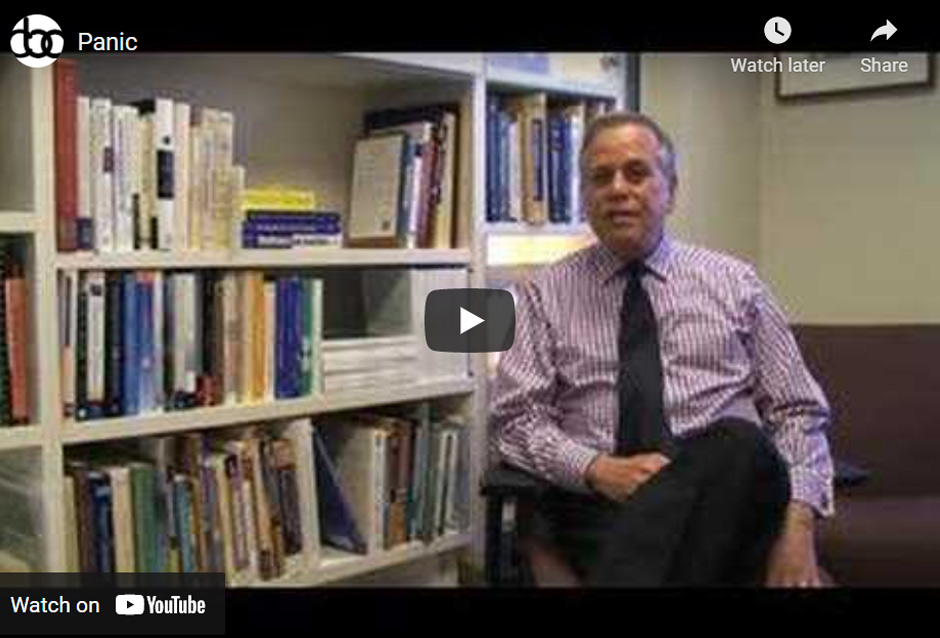
How panic works through a panic cycle.
Click here for more info on the National Institute of Mental Health's website.
PSYCHOLOGICAL CONCERNS AND DISORDERS IN CHILDHOOD AND ADOLESCENCE
In childhood, mental health concerns do not necessarily look the same as they do in adults, and they require treatments that look a little different, too. The best treatments for children and adolescents take a contextual approach, involving the family, teachers, coaches, doctors, and anyone else who plays a prominent role in the child or adolescent’s life. Some common childhood/adolescent psychological concerns treated at CBA include depression, generalized anxiety, specific phobias, separation anxiety disorder, ADHD, and obsessive-compulsive disorder.
Treatments for child and adolescent psychological disorders generally include shifting a child’s behavioral and cognitive patterns in order to reduce distress and functional impairment. Importantly, we believe that parents play a key role in helping coach their child both in and outside of the therapy room to maximize treatment success. Some examples of common treatment targets include enhancing a child’s emotional awareness, bolstering skills in emotion regulation, and helping the child build fulfilling social relationships with peers, siblings, and parents. Another common therapy target might include building a diverse toolbox of coping skills that children or adolescents can turn to when feeling anxious or depressed. We also collaborate with parents to help devise a collection of effective parenting strategies that work for them and their families.
Click here to learn more on the National Institute of Mental Health's website.
PSYCHOLOGICAL FACTORS AFFECTING PHYSICAL CONDITION
This diagnosis is used for any medical disorder for which psychological factors have been shown to affect the intensity, frequency or duration of the medical illness. Common medical illnesses that may fall in this category are asthma, irritable bowel syndrome, peptic ulcer disease or complications from recovery from surgery, etc.
CBT in this context seeks to reduce anxiety and depression that may be affecting the course and severity of the general medical condition. We draw from standard cognitive, behavioral, acceptance and mindfulness based strategies as needed to help each client.
Click here to read more on Scribd.
Psychosis
Individual with psychotic symptoms can experience unusual perceptual experiences such as hearing voices or seeing things that others don’t see or hear. These disturbances can make it difficult for the individual to determine what is real or not real. They can also begin to become very anxious or uncomfortable around others and mistrustful of their motives. Many individuals say psychosis can be frightening and confusing and loved ones often become very concerned yet do not know how to help. Psychosis can be brief or a longer term mental health issue.
CBT can be particularly useful as an adjunctive treatment in targeting residual symptoms not addressed by medications. In particular, CBT has been shown to improve overall functioning by equipping individuals with tools for managing distressing experiences to minimize impact on social, occupational and personal goals.
Click here to read more on National Alliance on Mental Illness' website.
Click here to read more on WebMD.
Post-Traumatic Stress Disorder (PTSD)
Posttraumatic Stress Disorder (PTSD) occurs after an individual has been exposed to a traumatic or life-threatening event during which he/she experienced intense feelings of fear, helplessness, or horror. Following the trauma, reexperiencing symptoms are common (e.g., flashbacks, intrusive thoughts, memories, and dreams about the event), along with avoidance of thoughts, situations, people, or places associated with the trauma. The person may also feel emotionally “numb,” irritable, and hypervigilant to their surroundings. Symptoms of PTSD often occur immediately after the trauma and last at least six months.
Although many individuals with PTSD are treated with medication, short-term cognitive-behavioral therapies have been proven to be very effective treatments. Prolonged Exposure Therapy (developed by Dr. Edna Foa) and Cognitive Processing Therapy (developed by Dr. Patricia Resick) are two empirically-supported treatments for PTSD. Typically, these therapies focus on “exposing” the individual to trauma cues, and include exercises such as writing narratives about the traumatic experience or conducting imaginal exposures to trauma memories. When appropriate, virtual reality can be a useful step in the exposure process, particularly for combat-related PTSD. As the person is repeatedly exposed to the traumatic memories, his/her fear of the traumatic experience decreases, and he/she is able to function more adaptively.
Click here for more info on the National Institute of Mental Health's website.
Social Phobia
A person with Social Phobia (also called Social Anxiety Disorder) experiences anxiety in a variety of social situations. Fearful situations can include public speaking, having conversations, meeting new people, dating situations, eating in front of others, being assertive, and speaking on the telephone. In addition, fear of using public restrooms with other people present is also a form of social phobia (a condition called “paruresis”). Typically, individuals with Social Phobia attempt to avoid most situations that trigger anxiety, which can result in social withdrawal and even isolation.
One of the most common treatments for Social Phobia is cognitive-behavioral therapy, which can be conducted on an individual basis or in a group. The cognitive therapy component helps the person recognize and challenge maladaptive beliefs and predictions about social situations, so he/she has a more accurate perception. The “exposure” component of treatment involves planning (and occasionally designing) specific social situations for the individual, so that he/she learns to confront these fears. Exposures may be conducted during the course of a therapy session with the therapist present, and then homework assignments are assigned for the individual to complete alone. Although medications (such as antidepressants) may be helpful for some people during the course of therapy, recent studies have shown that it is not necessary to be taking medication to get full benefit from therapy.
Click here for more info on the National Institute of Mental Health's website.
Tinnitus
Tinnitus is the conscious perception of a sound in either one or both ears, or in the head without an obvious corresponding external sound present. Although it is usually referred to as a "ringing in the ears", it is also sometimes described as an audible hiss, roar, whistle, chirp, or click. Tinnitus is not considered a disease, however it is a serious medical condition with a variety of underlying causes and a wide range of severity levels. Unfortunately, there is currently no cure for tinnitus.
Tinnitus is a relatively common experience with approximately one-third of our adult population having experienced it at one point in their life, however less than 1% of that population have sufficient severity to drastically affect their quality of life. Often times, the severity of tinnitus is related to the psychological response of the individual experiencing the abnormal tinnitus signal. Recent research has shown that the addition of a CBT component to treatment can be helpful.
Click here for more info on the American Tinnitus Association's website.
